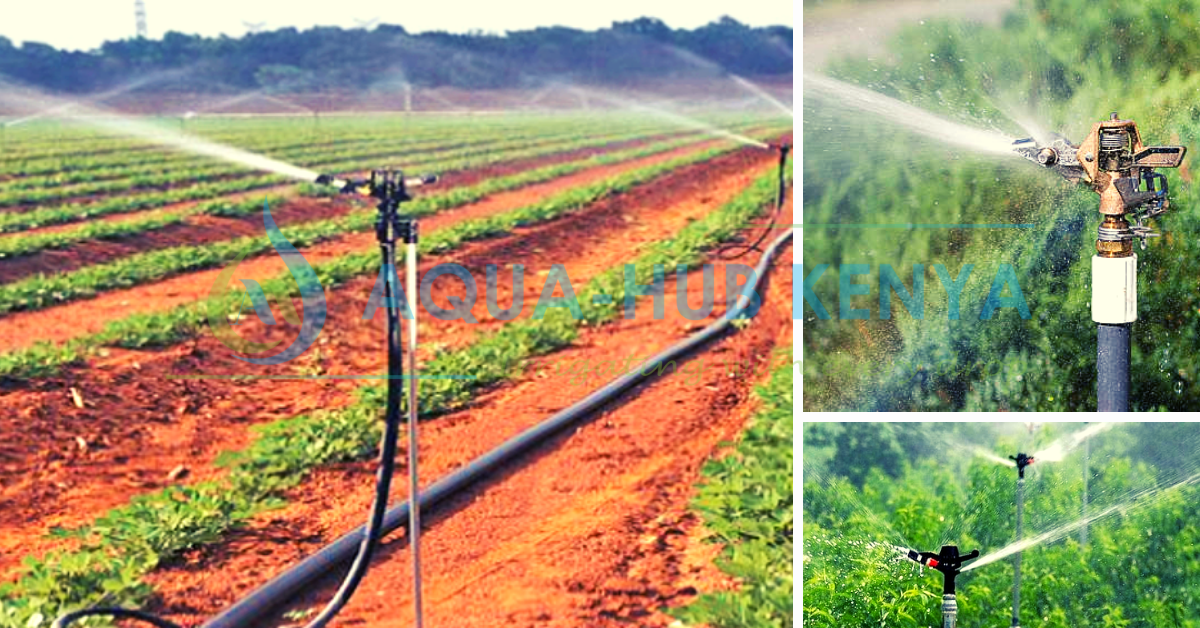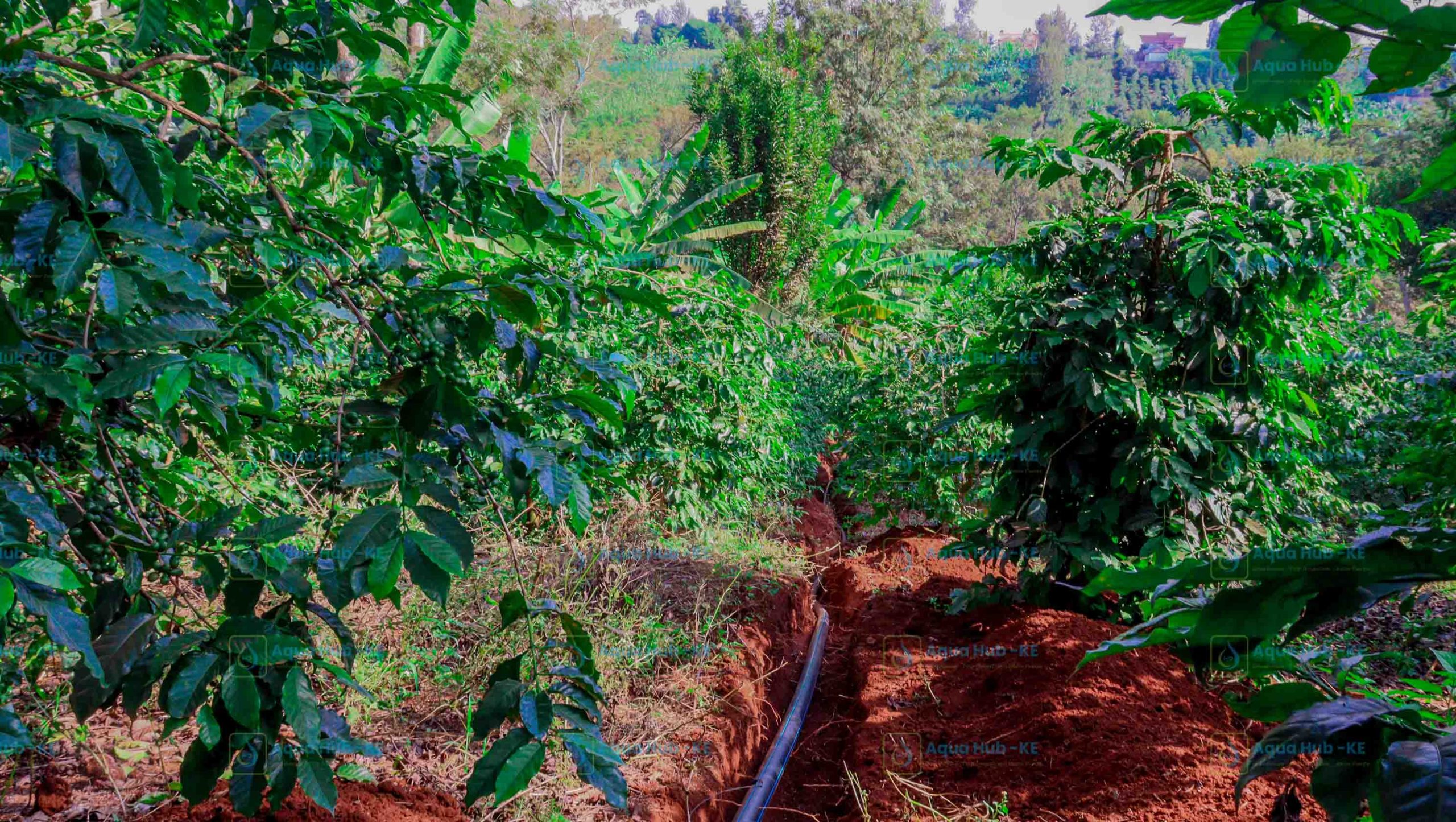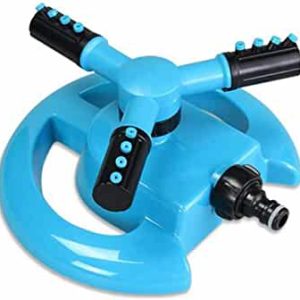Aqua Hub is among the top suppliers of irrigation sprinklers in Kenya. We also install irrigation sprinklers. Our sprinklers are the best and most affordable. The majority of the plants grown using this technique are leafy plants with hard steam. They include maize, coffee, tea, and pineapple. In terms of movement, sprinklers can be static and steady. They can be used for a definite part, measured in square meters if they are built permanently. The irrigation requirements are anticipated by the farmer. They then get in touch with Aqua Hub irrigation to design and implement their long-term system.
What are irrigation sprinklers in Kenya?
Irrigation sprinklers in Kenya are systems that use a network of pipes. And sprinkler heads to distribute water over a large area of land. These systems are typically used for crop irrigation in areas where there is insufficient rainfall. Or where water resources are limited. Sprinkler irrigation systems can be either stationary or mobile. They can also be powered by a variety of sources, including electricity, diesel, or solar power. They are popular in large-scale commercial farming and are also used in small-scale farming.
What are the types of irrigation sprinklers in Kenya?
There are several types of irrigation sprinklers used in Kenya, including:
- Impact sprinklers: These are the most commonly used type of irrigation sprinkler in Kenya. Impact sprinklers use a rotating arm to throw water out in a circular pattern. They are typically powered by a diesel or electric motor. They can also be adjusted to vary the coverage area and water pressure.
- Centre pivot sprinklers: These are large, stationary systems that consist of a series of sprinkler heads mounted on a central pivot point. They are often used for large-scale commercial farming and can cover large areas of land.
- Travelling sprinklers: These are mobile systems that move along a set of wheels or tracks. And can be used to irrigate large, irregularly shaped fields.
- Drip irrigation: Drip irrigation systems deliver water to plants through a network of small tubes with emitters. Or drippers that release water at the root zone of the plants. They are efficient and use less water.
- Micro irrigation: Micro irrigation systems are a type of low-volume irrigation that uses small amounts of water and pressure to deliver water directly to the root zone of plants. And are becoming more popular in Kenya.
- Rain gun irrigation: Rain gun irrigation systems are large, stationary systems that use high-pressure nozzles to spray water over a wide area. They are typically used to irrigate large commercial fields and orchards.
What types of crops are suitable for irrigation sprinklers?
Irrigation sprinklers can be used to grow a wide variety of crops, including:
- Field crops: Crops such as corn, wheat, barley, and sugarcane can be grown using irrigation sprinklers.
- Fruit crops: Orchards of fruit trees such as citrus, mangoes, avocados, and bananas can benefit from irrigation sprinklers.
- Vegetable crops: Vegetable crops such as tomatoes, peppers, cucumbers, and lettuce can be grown using irrigation sprinklers.
- Floral crops: Floral crops such as roses, carnations, and chrysanthemums can be grown using irrigation sprinklers.
- Perennial crops: Perennial crops such as coffee, tea, and macadamia can also benefit from irrigation sprinklers.
- Livestock feed: Forage crops such as alfalfa and clover can be grown using irrigation sprinklers to feed the livestock.
It’s important to note that not all crops are suitable for irrigation and that irrigation systems have to be designed to meet the specific needs of the crop and the farm’s environment.
What are the benefits of irrigation sprinklers?
- Increased crop yields: Irrigation sprinklers can help to ensure that crops receive a consistent supply of water, which can lead to increased crop yields and improved crop quality.
- Water conservation: Irrigation sprinklers can help to conserve water by delivering water directly to the roots of plants, reducing water loss through evaporation and runoff.
- Increased crop production: Irrigation sprinklers can extend the growing season and allow farmers to grow multiple crops per year, thus increasing crop production.
- Better crop management: Irrigation sprinklers can be controlled and scheduled, which allows farmers to better manage water usage and apply it when the crops need it the most.
- More efficient use of land: Irrigation sprinklers can allow farmers to grow crops in areas where rainfall is insufficient or unreliable, making more efficient use of land.
- Reduced labour costs: Irrigation sprinklers can reduce the need for manual labour and can make the irrigation process more efficient and less time-consuming.
- Reduced weed growth: Irrigation sprinklers can help to reduce weed growth by keeping the soil consistently moist, which can make it more difficult for weeds to establish.
- Increased flexibility: Irrigation sprinklers can allow farmers to adapt to changing weather conditions and water availability, which can be especially important in areas with variable rainfall.
What are the factors to consider when buying irrigation sprinklers in Kenya?
- Size of the field: The size of the field to be irrigated will determine the type and size of the irrigation system required. Larger systems will be needed for larger fields and smaller systems for smaller fields.
- Type of crop: The type of crop being grown will also affect the type of irrigation system required. Different crops have different water requirements, and the irrigation system will need to be able to deliver the appropriate amount and type of water to the crop.
- Water source: The location of the water source and the method of delivery (gravity, pumped, etc.) will affect the design of the irrigation system. The more remote the water source, the more complex and expensive the system will be.
- Climate: The climate of the area, including temperature, humidity, and rainfall patterns will also affect the type of irrigation system chosen. For example, systems that can handle high temperatures and high evaporation rates will be needed in arid regions.
- Power source: The power source required to run the irrigation system will also need to be considered. Some systems can be powered by electricity, while others may require a diesel engine or solar panels.
- Cost: The cost of the irrigation system will also need to be considered. The budget will affect the type and size of the system that can be purchased.
- Maintenance: The level of maintenance required for the irrigation system will need to be considered. Some systems will require more regular maintenance than others.
- Irrigation design: It’s important to design an irrigation system that is suitable for the size of the field and the crop that is planted. Proper design will ensure optimal water distribution and reduce water loss.




